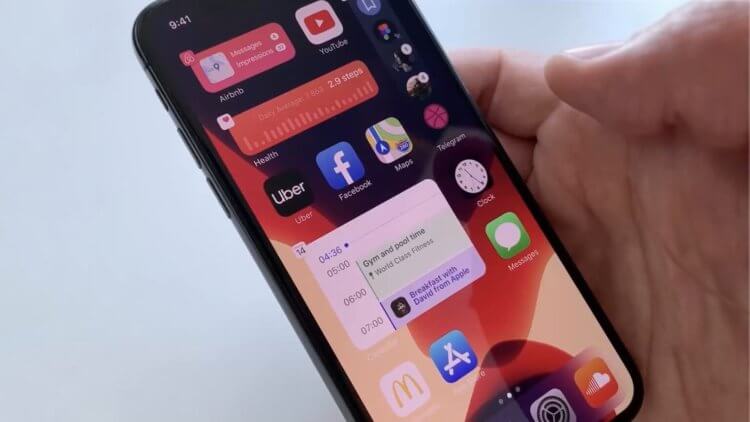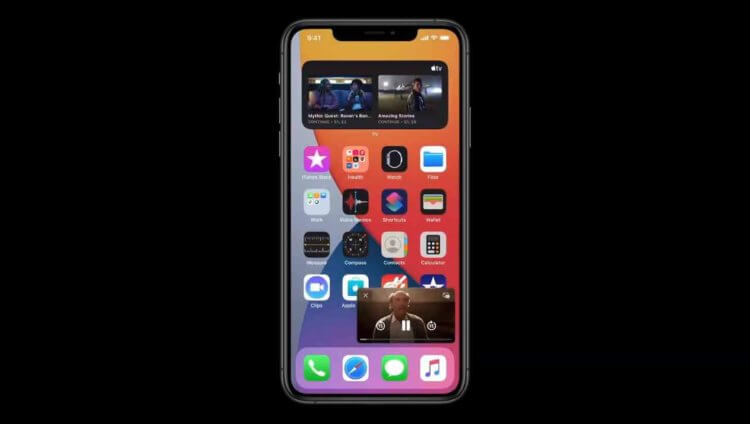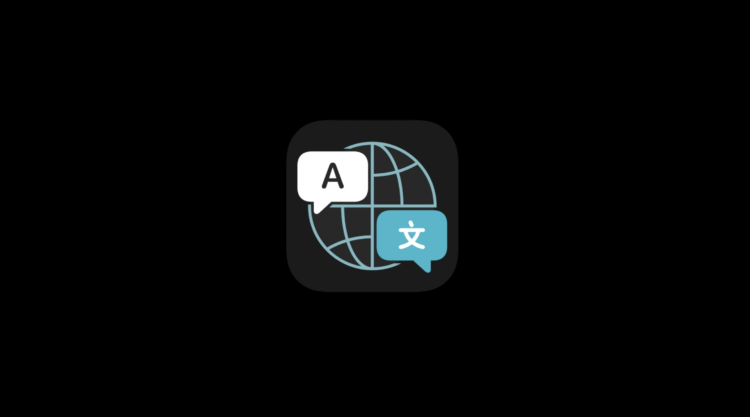Apple from the very beginning has formed for itself the image of the only leader of the mobile market, which is blindly followed by all competitors without exception. Despite the fact that the Cupertino-based company regularly pretended that it was she who set the trends, everything was completely different. Most of the technologies that Apple embodied have already been implemented by someone before her. But at some point, the desires of the company's management materialized, and it really left the position of catching up to the position of the trendsetter. True, as iOS 14 showed, this was a temporary phenomenon, because Cupertino did not stop adapting other people's developments for themselves.

iOS 14 is like Android more than any other version
Replace standard applications with iOS
Apple has always been a very strict company and adhered to the principle of non-interference from independent developers. Because of this, no third-party application could be used on iOS as standard. Unlike Android, where such a possibility has existed since time immemorial. After all, it is so logical and correct when people do not follow the order, but they themselves choose what suits them best.

Default applications on iOS can now be changed to third-party ones, although not all
In iOS 14 Apple, she decided to slightly weaken totalitarian control and gave users the opportunity to replace the standard mail client and browser with alternative solutions. Yes, it is still possible to replace not any pre-installed application, but only these two, but for users iOS who are accustomed to bans on such actions, this is already a real holiday.
Widgets in iOS 14
Widgets are a separate topic altogether. For a long time Apple she ignored this phenomenon, considering it unworthy of her operating system. The company then relented a bit and offered users a separate page where they could post widgets. But this concept was out of place, because no one wanted to launch a separate screen to see the information that can be seen by opening the application.

Widgets officially appeared at iOS
Therefore, Cupertino decided that the widgets should be brought to the desktop. What for? For clarity, of course. And it doesn't matter that all the manufacturers Android – smartphones have long abandoned them because of the increased load on hardware, battery and traffic and practical meaninglessness. After all, widgets are a priori inferior to applications, contain less information, and take up more desktop space. But well, let Apple have some fun.
Picture-in-picture for iPhone
Picture-in-picture mode has been around on iOS for a very long time, but it was only available on iPad. Apple believed that the screen iPhone would not be large enough to accommodate a video window. Yes, modern smartphones have a display with a diagonal of over 6 inches, but Cupertino still believed that this was not enough. However, during the development of iOS 14, the company's opinion suddenly changed.

Picture-in-picture finally got to iOS
In iOS 14 users iPhone will finally officially get the picture-in-picture mode, which has been available on Android since time immemorial, when devices were considered phablets with a screen diagonal of 5.5 inches. I can't judge how practical and convenient it is, because I myself prefer to watch videos in full screen even on iPad, not to mention smartphones. But, perhaps, someone will like this innovation.
What Siri and Google Assistant have in common
Despite the fact that Google launched the Google Assistant much later than Apple its Siri, the search giant's voice assistant has evolved more rapidly. He learned not only to more competently and more accurately respond to user requests, but also received a special mode for interacting with system elements. Now a similar one appeared in iOS 14.

Siri gets compact mode as Google Assistant
Siri will no longer cover the entire screen, and an animated circle below will signal its activity. Compact mode is needed in order to more quickly and easily activate system applications, services and widgets, without interrupting the execution of current processes. Is it more convenient? Yes, it is. Another would be to replace Siri with something more capable, and it would be generally chic.
How to translate text in apps
Probably everyone knows that Google Chrome has a built-in translator, but few people are aware that Android has long been offering the function of translating text in any application. If you haven't heard of this, be sure to read it – using this link I made a detailed analysis of this function and described how to use it. Apparently, Apple found out about her and decided to implement something similar at home.

iOS 14 has a system translation app
Yesterday Apple introduced the Translate application, which can be used as a system translator. It supports 12 languages, including Russian, and allows you to translate text in various standard applications – from a browser to a messenger. But how things will be with third-party software is not yet clear. Perhaps, its support will be screwed up to the release.
